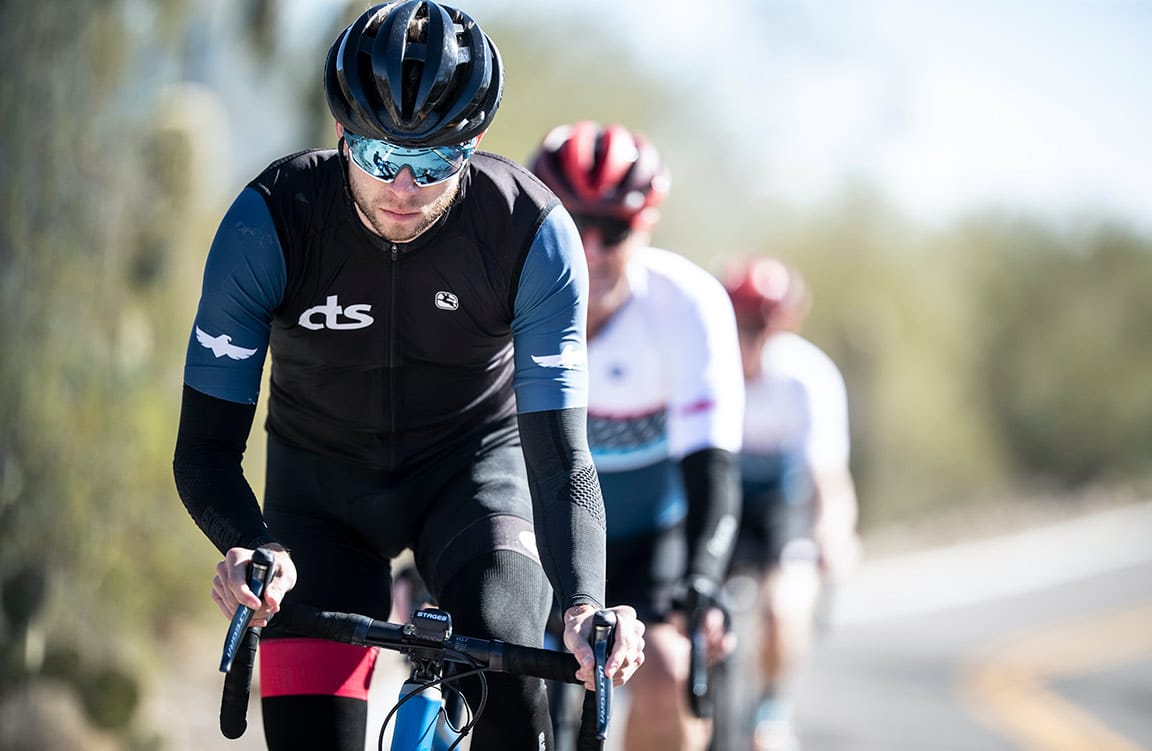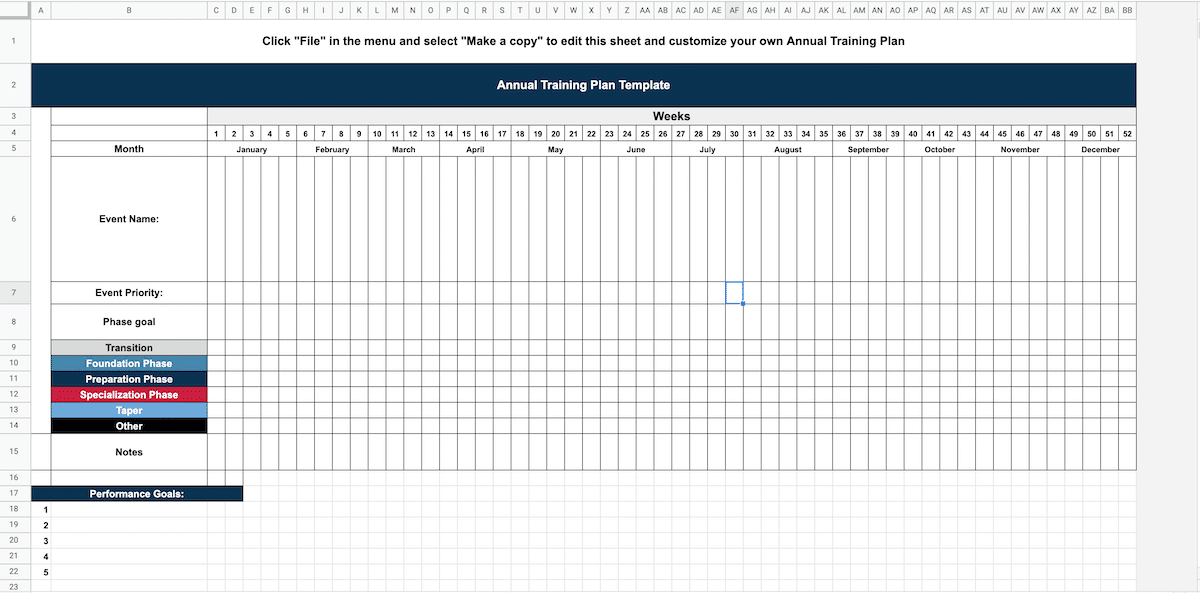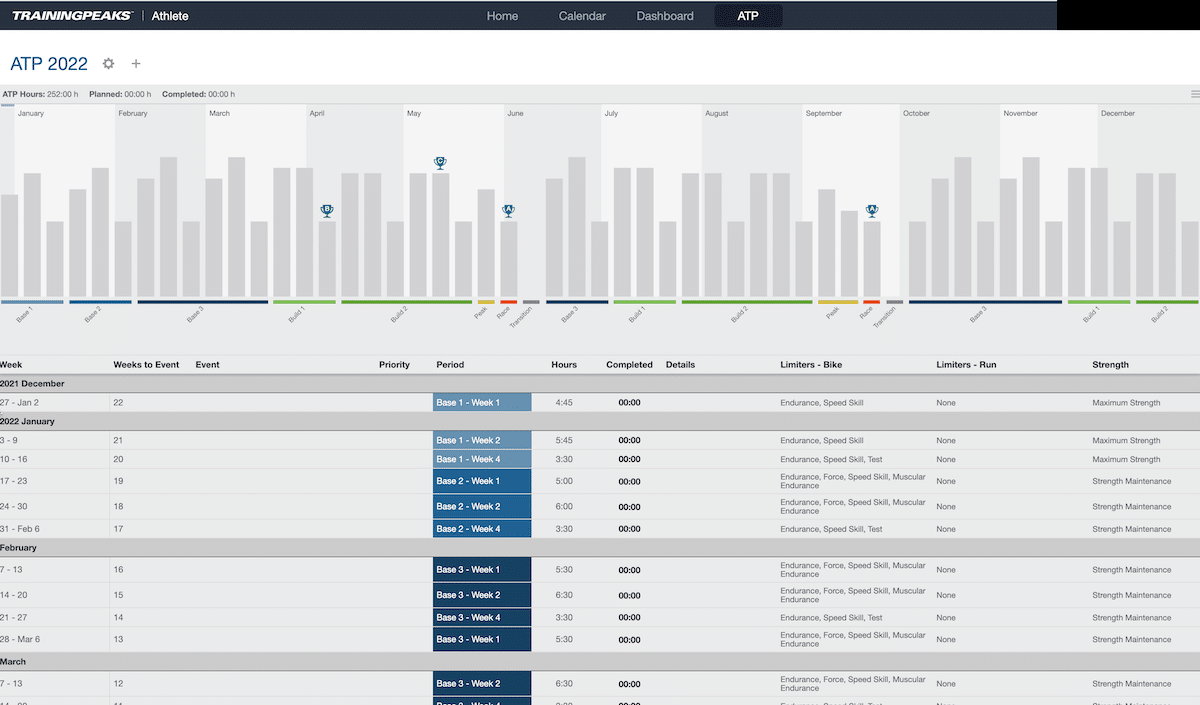
Cyclists’ Guide to Creating an Annual Training Plan
By Maddison Russell,
CTS Senior Coach
With the New Year rapidly approaching, many cyclists are wrapping up the Transition Period or “off-season” and getting ready to ramp up training in January. If you haven’t done so already, it is important to start the year with defined goals and an annual training plan to achieve them.
Here’s how to get the season planning process started.
Assess Your Previous Season
Before planning training for next year, you’ll want to assess and evaluate your performance from this year. This can include measuring your progress in terms of power durations (i.e. 5-, 10-, 20-minute power outputs), lactate threshold power, LT power as a percentage of VO2 max power, and other physiological measures.
Remember, however that performance is more than just training data. Note progress in segment or course record times, event results, training compliance and eating behaviors. Be sure to include progress in non-physical aspects of training, like mental skills development, visualization, and dealing with adversity.
Sit down and take some time to look at your progression throughout the year. Ask yourself these questions:
- Did you meet the goals you set for yourself?
- Where did you perform well and where did you fall short, and why?
Look at each phase of training and the weeks leading up to your events and consider ways you could have done things differently to be more successful.
When you were successful, look for patterns in your training, resting, and nutrition behaviors in those weeks before the event. Look at the outliers. What were your best and worst training sessions, events, or field test during the year?
If you’ve kept a consistent log of subjective notes on your sessions, you’ll be able to look back and have an idea of why those things were or weren’t successful. Weigh these outlier performances when moving on to the planning phase to tweak your approach for next year.
Setting Your Cycling Goals
After you have assessed your performances from last season, you can develop a vision of where you want to go next year. As you scaffold your goals to build up to the most desirable and ambitious objectives, remember to set three types of goals:
- Process
- Performance
- Outcome goals
Process Goals
Your process goals are the controllable, everyday tasks you already have the skill and capacity to accomplish.
They are the incremental achievements that help establish high-performance habits, like averaging a specific number of hours of nightly sleep, consistently showing up for training a given number of days per week, fueling yourself properly for longer rides, and finishing your interval workouts.
If you successfully complete your process goals, you are likely to achieve your performance goals.
Performance Goals
Performance goals are objectives you can achieve by improving things you can control, like increasing your power at lactate threshold by 15% over three months, gaining the skills to clear a technical section of a mountain bike trail, or setting a new PR on a local climb.
Achieving performance goals provides the tools that put you in the best possible position to accomplish your outcome goals.
Outcome Goals
Outcome goals are the most visible kind. They are the race victories, podium appearances, or belt buckles for finishing races in a specific time.
The tricky aspect of outcome goals is that they are not completely within your control. You can have your best-ever performance on the day, and someone may be faster. Or you could have great fitness but crash out or have a mechanical.
That’s why it’s wise to establish a full set of process, performance, and outcome goals for your most important events.
A, B, and C Events
When planning your goal events, select and rank a mixture of events in terms of importance.
A Events
For most athletes, I suggest a maximum of two or three “A” events spread out during the year.
The spacing between these events should allow for recovery from a previous event, purposeful training, and a taper period before the next event. If you choose too many “A” events, you risk having too little time to recover and build form between them, which leads to diminished performance.
It would be a good idea to have around 8-12 weeks between A events in order to peak at the proper times.
B Events
Next, include a few “B” events on your schedule. I view “B” events as events that provide a confidence boost and training stimulus leading into “A” events.
They should be events that closely mirror the demands of your “A” events, and although they may not be as demanding or intensive overall, they should allow you to practice the pacing and fueling strategies you will use for your main goals.
► Free Cycling Training Assessment Quiz
Take our free 2-minute quiz to discover how effective your training is and get recommendations for how you can improve.
You won’t perform a full taper prior to “B” events, but it is good to schedule them near the tail end of rest weeks so you can compete reasonably fresh. You’ll need to assess how demanding your “A” races are and how many you are doing, but if you have fewer “A” races you can typically incorporate a couple more “B” events.
C Events
“C” events are good for staying motivated, having fun, working on skills, and completing a hard workout. They are the lowest in terms of priority because you can achieve a similar training stimulus through solo or group workouts.
If you go too long between events without getting your competitive juices flowing, you can get mentally burned out and fatigued before you reach your B and A events.
“C” races can help you develop and reinforce skills and tactics, as well. Although “C” events should have a lower overall training stimulus than a “B” or “A” event, you still need to balance the training load and stress that results from frequent racing. Typically, you can train through “C” events and use them as quality training sessions during build phases.
Cycling Annual Training Plan Considerations
Once you have your races laid out for the following year, you can schedule your major training blocks and incorporate those events into and around them. Your annual training plan is a guide to the progression you are looking for as you build towards your “A” events.
When planning an Annual Training Plan, start with the least event-specific aspects of training and progress toward more event-specific training as your “A” goals approach.
A traditional periodization plan creates this progression through Foundation, Preparation, and Specialization (or Competition) periods of training.
Foundation Phase
The Foundation period for endurance cyclists typically focuses on low- to moderate-intensity aerobic endurance training.
Preparation Phase
From there, the Preparation period increases the focus on event-specific training intensities to develop the physiological tools for performance. This is a good time to incorporate “C” events and perhaps a “B” goal.
Specialization Phase
The early portion of the Specialization period is a good place for “B” goal events, not only for the training stimulus they create themselves, but for testing out and refining fueling strategies and tactics and homing in on the aspects of event-specific performance you still need to address. As you progress through the specialization period, incorporate training sessions and training bocks that replicate the race-specific demands of your “A” event.
What About A Taper?
The point of a taper before a goal event is to reduce the detrimental effects of fatigue so you can access all of your fitness and form. The key to a successful taper is reducing training volume by 30-50% over the two weeks leading into an event, while maintaining intensity.
So, you might reduce training frequency, shorten your rides, and ride easy – except for some very specific hard interval sessions.
However, keep in mind that a perfectly executed taper may only improve performance by 1-3%, so the training you’ve done in the months before your event matters a lot more than what you can gain during a taper.
Annual Training Plan Template
We’ve set up an Annual Training Plan template in a Google Sheet to help you plan out your training schedule and visualize the year. Sign up for our weekly training content newsletter below to access the template.

Other Helpful Tools
Our TrainRight Membership gives you access to a Premium TrainingPeaks account where you can build an annual training plan and plan out your training throughout the year. You also get access to pre-built training plans and workouts you can use to guide your training schedule. Learn more about the TrainRight Membership here.

Summary
It’s important to note that your annual training plan and your goal-setting process are just guides. Things are bound to come up that necessitate changes to your plan, but that’s part of why it’s so important to have a long-term plan in the first place.
Going through this process can help you get ahead of holidays, family obligations, and work travel to anticipate where you can make the most of your training. Even if one or two weeks of training get messed up along the way, you still have a firm understanding of your goals are and where you want to go.
If you are proactive in planning your season, you won’t need to be reactive all year trying to play catch up.
► FREE Mini-Course: Learn How to Maximize Your Limited Training Time
Learn step-by-step how to overcome limited training time and get faster. Walk away with a personalized plan to increase your performance.

Comments 1
I am 78 and in the planning stages for this coming 2023, mostly for gravel events with a goal of winning the Master’s World Championships in my age group.
If it takes the USA and UCI too long to anounce their dates and if the course for the Worlds in Italy is not more challenging than last year, then I can wait another year, age up and go to Belgium for the Worlds in 2024.
Is there enough data available for guys my age that is available to use as a guide and to compare progress?